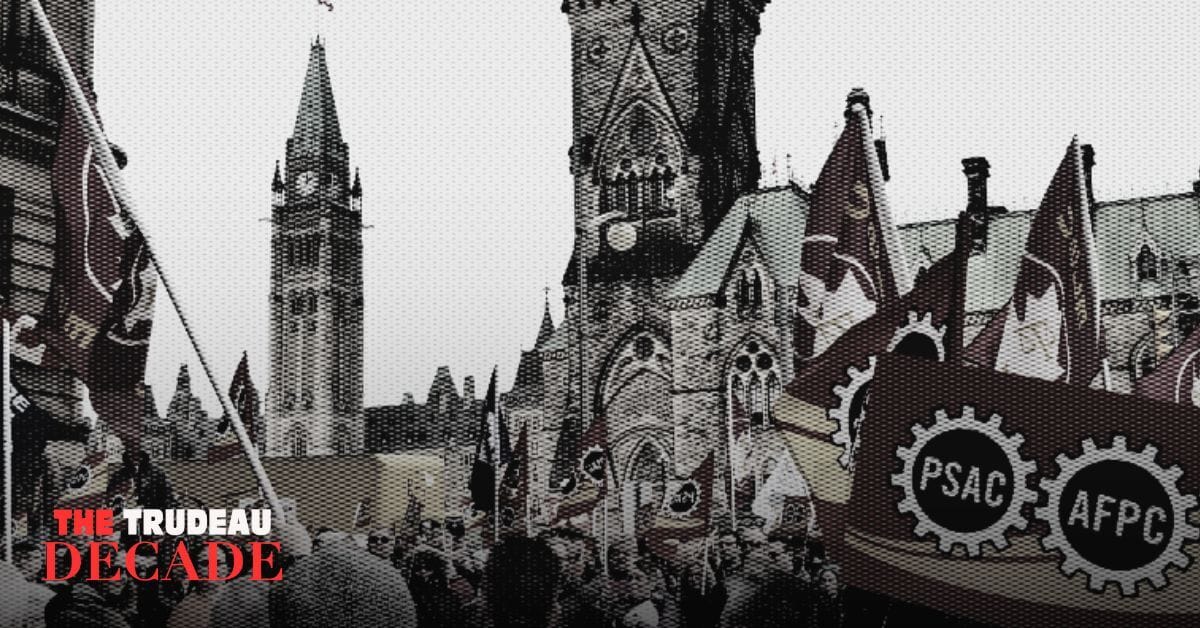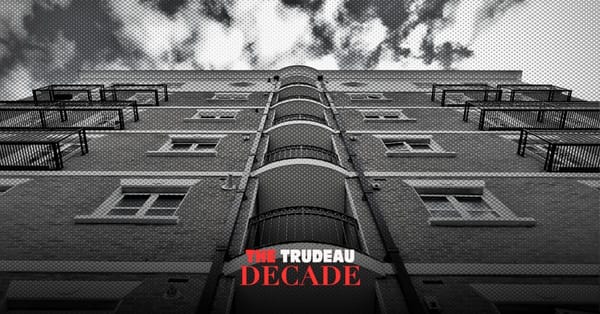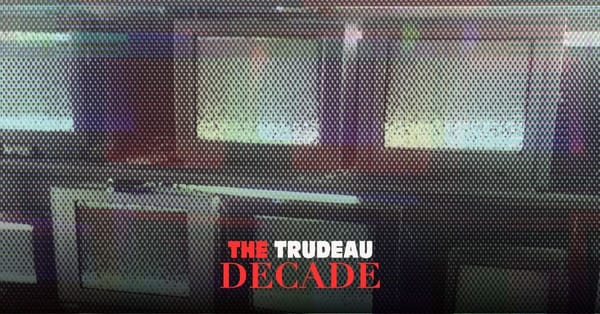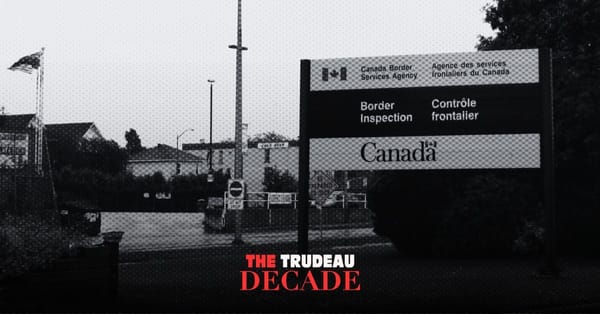
Where We Are
If a recent CBC poll is correct, there is a 94 per cent chance that Canada will elect a Conservative majority government by the end of next year. Unless something changes drastically between now and then, Pierre Poilievre will be prime minister in 2025. With a comfortable majority, his Conservative Party will be free to ram through its right-wing, anti-worker agenda.
The writing has been on the wall for some time, as the Liberals abandoned one progressive policy objective after another.
Poilievre has masterfully capitalized on widespread economic anxiety. While inflation has largely subsided, huge numbers of people continue to suffer through what many have termed a “cost-of-living crisis.”
The Liberals have refused to rein in skyrocketing housing prices, offering only individual “supply-side” solutions to this pressing social problem. Meanwhile, Poilievre has adeptly exploited housing insecurity to his advantage, despite a policy program offering little more than tax cuts and deregulation.
Relatedly, wealth and income inequality have continued to widen over the past several years. The Liberals chose to ignore this, tinkering around the edges with tax policy while deliberately letting the air out of a relatively strong post-pandemic economy. Though employment reached historic levels in 2022, unemployment has now creeped up to 6.5 per cent and wage growth has cooled.
Under the Liberals, meaningful action on climate change has been nowhere to be found. “Axing” the government’s carbon tax, perhaps Poilievre’s signature campaign promise, is the predictable right-wing populist response.
After COVID-19 exposed the gaping holes in our social safety net, the Liberals failed to act. Our health-care system remains understaffed and underfunded. Despite promising for years to reform Employment Insurance, the government reinstated the very same eligibility rules that left most unemployed workers without benefits pre-pandemic.
Expansions of the welfare state that the Liberals did manage — the beginnings of a national childcare program, a means-tested cash benefit in place of a dental program and the first steps toward pharmacare — now hang in the balance. Childcare might survive a Poilievre government, but the fate of the dental benefit and pharmacare are precarious.
Under pressure from the NDP, the government fulfilled one of labour’s long-standing demands and banned the use of strikebreakers in federally regulated workplaces. Yet whatever favour this curried with organized labour was almost immediately extinguished by the government’s various interventions undermining workers’ right to strike.
The NDP, as the nominal social democratic alternative, finds itself in an almost impossible political position. What progressive gains have been secured over the past several years were no doubt the result of NDP pressure, mostly through the supply-and-confidence agreement. Having recently propped up the government, however, it’s difficult to pivot to a posture of attack. The NDP consequently finds itself treading water.
Instead, it’s Poilievre’s Conservatives who fill the void of opposition.
How We Got Here
In 2015, the Liberals campaigned to the left of the NDP and promised renewed government investment following years of Conservative austerity and attacks on organized labour under prime minister Stephen Harper.
For workers, the government committed to overhauling the Canada Labour Code to strengthen minimum employment standards, eventually passing various minor reforms, including a paid sick leave provision. They also reintroduced card-check union certification in the federation jurisdiction.
The government’s economic response to COVID-19 gave some indication of what a more equitable society could look like. Income supports reduced poverty across the board. As the economy reopened, a brief period of labour market tightness allowed workers to bid up wages. At the same time, union density didn’t budge.
Like the Joe Biden administration in the United States, however, the Liberals quickly abandoned their commitment to “build back better” following the pandemic. Programs and services went underfunded. Temporary enhancements to social welfare were unwound while inflation ate away at workers’ purchasing power.
As prices spiked, Poilievre blamed the government’s supposedly reckless spending. This was always disingenuous. The pandemic necessitated massive government intervention to protect people from the virus and to prevent an economic depression. Had an avowedly right-wing party been in power, the economic stimulus would have almost certainly been smaller and the consequences much worse for working people. If anything, the government should have spent more.
Following the pandemic, low-wage employers balked at the leverage exercised by workers in a tight labour market. The Liberals essentially caved to this employer pressure by allowing businesses much greater access to temporary foreign workers. By loosening Temporary Foreign Worker Program restrictions, employers in sectors such as food and accommodation could depend on a steady stream of low-wage and highly exploitable workers without citizenship rights, rather than raise wages and increase investment.
Not only did this weaken workers’ bargaining power, it fanned the flames of the anti-immigrant backlash central to right-wing populism.
By failing to address the root causes of working class insecurity, the Liberals opened space for a right-wing Conservative pushback.
Where We Might Go
Finding a way out of this mess is the challenge we now face. The question is, how prepared is organized labour to fight back?
The Liberals have been adept at capitalizing on political divisions within the labour movement. Many unions, including large and influential ones such as Unifor, have for some time endorsed so-called “strategic voting,” which in practice often amounts to supporting Liberals to defeat Conservatives. The game isn’t worth the candle.
Strategic voting has driven a political wedge within the house of labour and weakened the movement’s traditional support for the NDP. Perhaps more importantly, this ill-conceived strategy has allowed the Liberals to secure union support while offering little in return.
Worse still, the Liberals’ various attacks on workers’ rights during their time in office have laid the groundwork for a Poilievre government to do much worse. Despite his pro-worker posturing, Poilievre has always been a card-carrying anti-unionist. If he and his party secure a majority in Parliament, don’t be surprised when the gloves come off. Some leaders of federal public sector unions already recognize this, and they’ll likely be the first in Poilievre’s crosshairs.
The success of Poilievre’s populist appeal to working class people should cause the labour movement to rethink its political strategy. At times, labour’s messaging on inflation and price-gouging has seemed almost indistinguishable from Poilievre. Detached from a left-wing program that prioritizes organizing rank-and-file workers, expanding the welfare state, and guaranteeing economic security for all, the left’s populist messaging may have simply echoed our conservative enemies.
Should the Conservatives win in 2025, a Poilievre government will be the devastating yet predictable culmination of 10 years of Liberal rule. Like centrists the world over, Canada’s Liberal Party could only hold the right-wing at bay for so long.
After failing to offer meaningful change to working-class Canadians, the Trudeau Liberals look destined to suffer the electoral fate of similarly feckless centrists across the West.
Union members should prepare themselves for the fight of their lives. What’s coming down the pike won’t be pretty and can only be stopped through solidarity and resistance.
More From The Trudeau Decade Series















